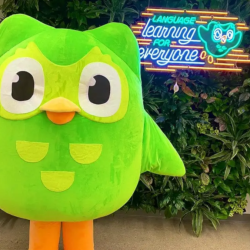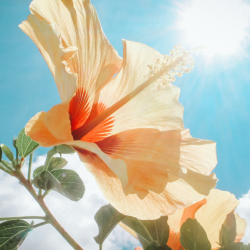From Barbenheimer to Tube Girl, 2023 saw brands jump on social media trends faster than ever. Simultaneously, a cost of living crisis influenced consumer spending habits, prompting people to be more selective about where they put their pennies. Contrastingly, 2023 marked a record-breaking year for social media earnings. The 50 honourees on the 2023 Forbes Top Creator list collectively amassed an estimated $700 million from their combined 2.6 billion followers, reflecting a 20% increase from the previous year’s $570 million.
Brands and creators are now grappling with the evolving social media landscape, understanding how creativity can thrive in the age of the ‘sellout internet.’ In its annual Think Forward report, creative agency We Are Social highlighted the top five trends brands can expect to see play out on social media in 2024.
We Are Social’s Global Director of Cultural Insights, Mira Kopolovic, gave MediaCat a deeper look into the five trends that will shape 2024: Attention layering, post-representation, the offline internet, everyday fandom, and mischief mode.
The shifting nature of the internet
Last year’s Think Forward report saw ‘algorithms funnelling people into even more specific corners of the internet.’ Users looked for authenticity and creativity in smaller spaces that replicated the early days of social media.
In 2024, expect to see longer-form content, changing forms of representation, and a blend between IRL and URL.
‘The objective of the report is to distil the most important things shaping the future of the internet, social media and digital culture for the next year,’ says Kopolovic. ‘We usually try to look across various cultural touch points and questions like discovery, influence, community, individuality and identity.’
The attention economy is changing
This year, a new and chaotic content format called ‘sludge content’ emerged. Featuring multiple simultaneous videos on screen aimed at keeping the viewers’ attention, this marked an era that Kopolovic refers to as ‘peak stimulus.’
But once we hit peak stimulus, where do we go?
‘Sludge content was a very visceral piece of evidence. One that showed that just ploughing forward doesn’t leave us anywhere to go. So once you have those videos layer on top of each other, you can either keep accelerating towards infinity, or you can look for a different angle,’ she said.
In an overstimulating content landscape, the report indicates a move towards content that turns away from hyper-stimulation. In 2024, expect absorbing, soothing, and long-form content that blends education with entertainment.
Exploring representation, not showing it
People still value representation, but there is less faith in the power of representation alone. We Are Social’s report suggests communities want to see ‘messy complexity’ over ‘neat narratives.’ Kopolovic says for most brands, this will mean leaning into more complex representation.
‘I think the next step or a more ambitious approach, one that will be achievable for all brands but is the furthest reach of this trend, is to forego presenting systemically oppressed groups and instead carve out spaces for those groups to explore their own identities.’
On Reddit, people are turning to spaces like r/AskBlackGirls, r/AskTransgender, and r/AskGayBrosOver30 to help people gain a more nuanced understanding of marginalised groups’ lived reality — but through exploratory, anonymous storytelling rather than loud ‘representation’.
‘These are valued spaces where people can find and speak to peers along a given identity vector, or people outside that group can ask questions to better understand someone else’s lived experience,’ Kopolovic said.
Fandom, connection, and wholesomeness
Kopolovic suggests that we are seeing a significant shift in the adoption, sharing and normalisation of what would once have been seen as ‘extreme’ fan behaviours. The internet has transformed how we express our passions, fostering a sense of belonging and community among fans and non-fans alike.
Loneliness is on the rise, with the World Health Organization (WHO) recently declaring it to be a pressing global health threat. Along with more acceptance of fan behaviour, the report suggests 2024 will see more blending of online and offline communities. For example, influencers are removing the final barrier between themselves and their followers, with sites like TrovaTrip allowing them to coordinate trips with their communities.
Kopolovic says that there’s a directional shift towards the tone of digital culture. What was once trending towards cynicism, post-irony, and nihilism is now heading towards a more wholesome tone.
‘This budding strand of wholesomeness that we’re seeing is impacting communities in terms of how they speak, how they expect to be communicated with, what content they make, share and consume and the creators they relate to.’
Beyond that, people are congregating around ‘wholesome’ figures, such as the No Fizzy Drinks man (@rohitoygre).
‘They’re internet personalities whose stories require no specialist knowledge or expertise to relate to.’
Read the full report here.
Featured image: Ivan Samkov / Pexels































